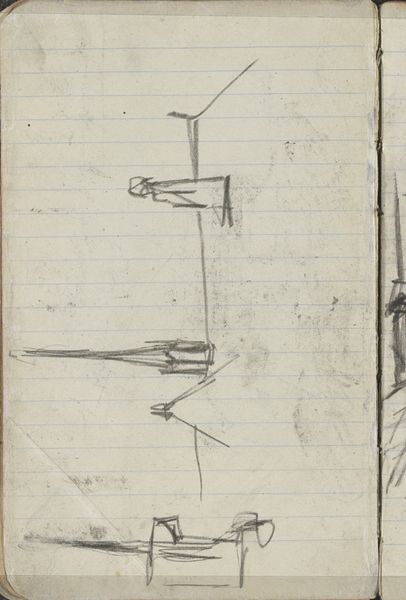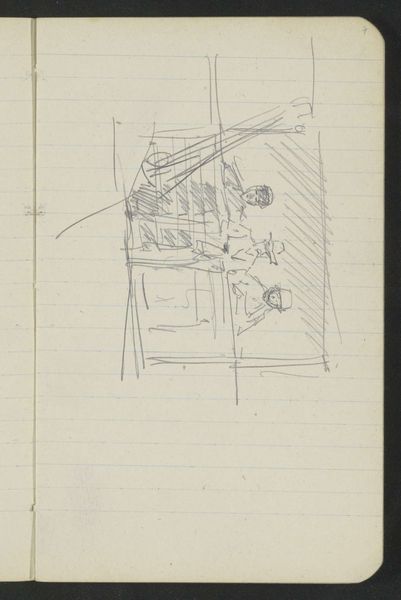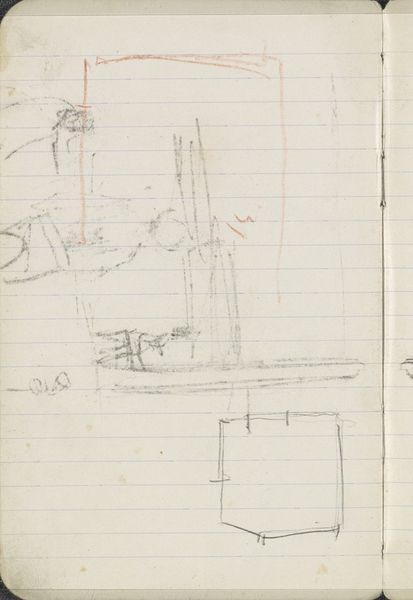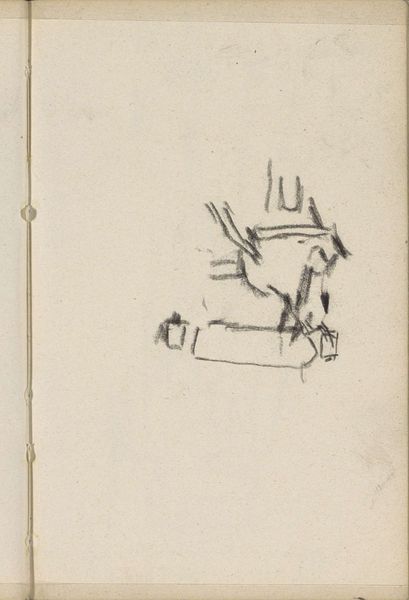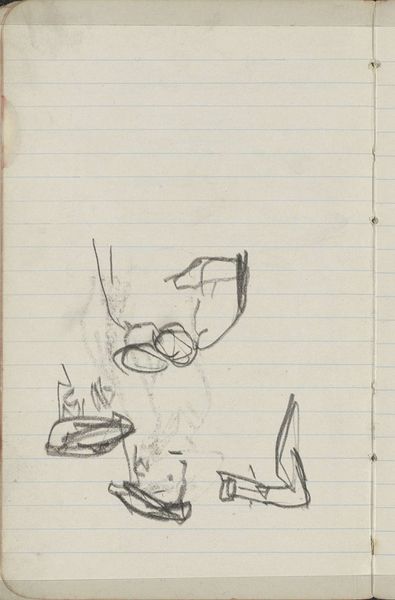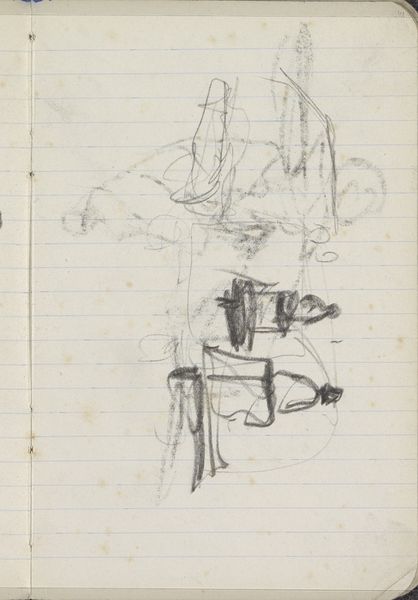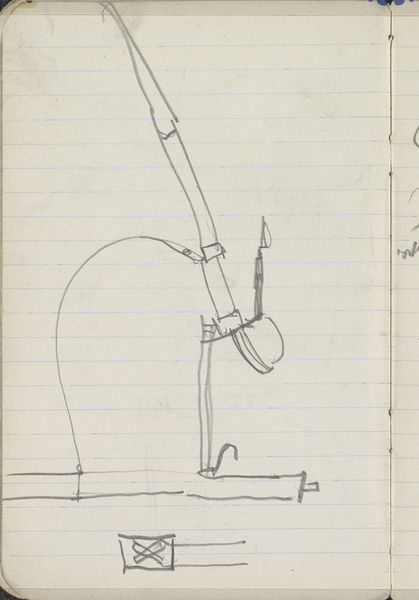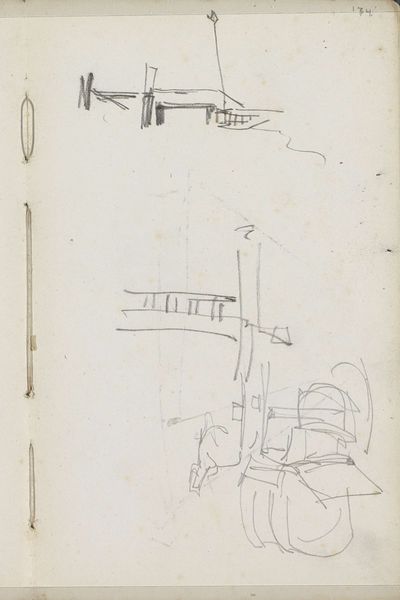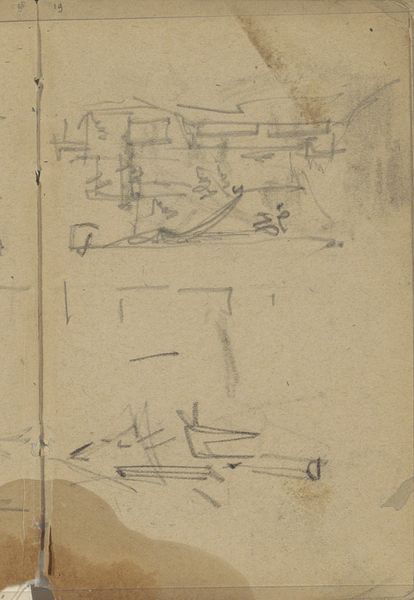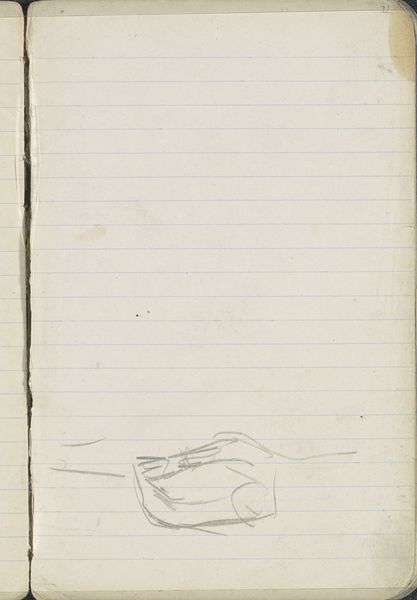
Copyright: Rijks Museum: Open Domain
Editor: This drawing, “Twee topgevels” or “Two Gable Facades,” by George Hendrik Breitner, dates from 1898 to 1902. It’s pencil on paper and part of the Rijksmuseum collection. It almost feels like a page torn from a notebook; a quick sketch of city architecture. What do you see in this piece? Curator: I see a fragmented visual language. These are more than just building sketches; they're mnemonic devices. Breitner is capturing architectural elements, not just for their form, but for the memories and meanings they evoke. Look at the top gable: almost totemic. What cultural associations do these particular shapes bring to mind? Editor: I’m not sure… they seem a bit abstract. The top one has a slight curve that reminds me of faces in art nouveau, or maybe it’s just the suggestion of ornamentation. Curator: Exactly! The ornamentation is key. It hints at the identity, status, even the history of the building's inhabitants. Breitner’s work goes beyond mere documentation. He understood how buildings accumulate cultural weight. Each line signifies something, a silent narrative of the city. Even the sketchbook lines serve as structure, adding to the symbolism. What are your thoughts on the other gable? Editor: It seems simpler, more angular…almost modern in comparison. Curator: Precisely! It reveals a changing Amsterdam, a move towards the functional. Breitner captures this visual shift, the silent dialogue between old and new, loaded with cultural implications. He knew how to observe and capture a city's soul. Editor: I never considered how much symbolism could be embedded even in a simple architectural sketch. It's like a secret language hidden in plain sight. Curator: Indeed. Breitner invites us to decipher the cultural memory etched onto the cityscape. A language expressed in lines and forms.
Comments
No comments
Be the first to comment and join the conversation on the ultimate creative platform.
